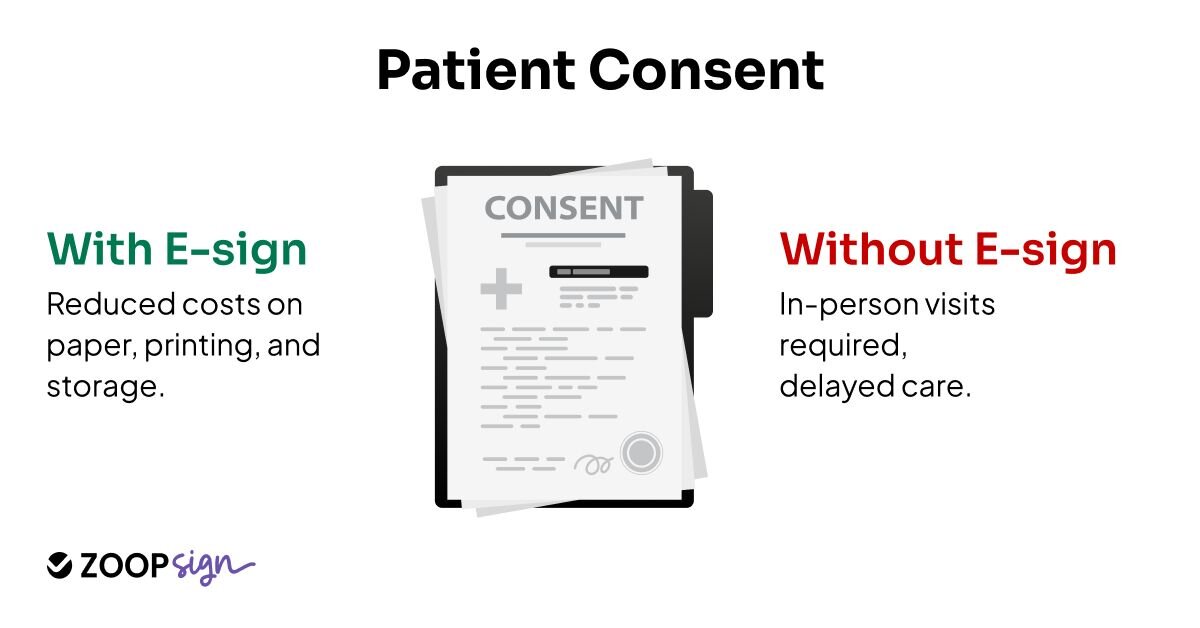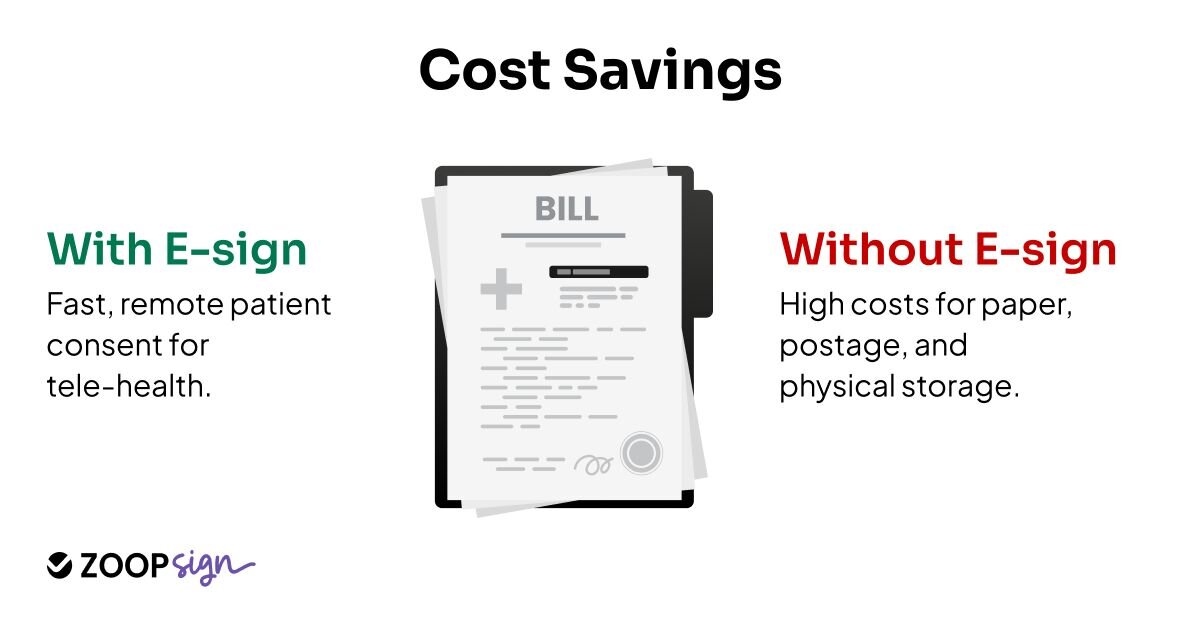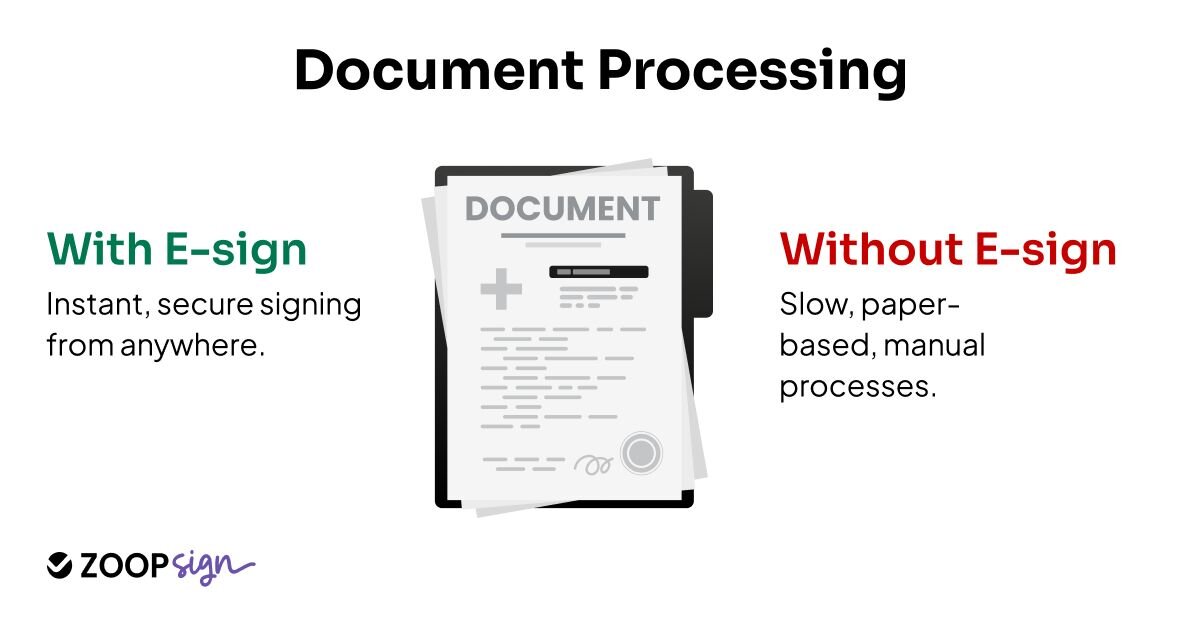Healthcare providers today are constantly looking for ways to simplify their processes and improve efficiency. One question that often arises is whether electronic signatures (e-signatures) can be used under the Health Insurance Portability and Accountability Act (HIPAA) rules.
This blog is here to help you understand how a HIPAA compliant electronic signature works in the healthcare sector, its benefits, and the steps to ensure your e-signatures align with HIPAA requirements.
Let’s dive in!
Understanding HIPAA Regulation
To get started, let’s briefly recap what HIPAA is all about. The Health Insurance Portability and Accountability Act, or HIPAA, was established in 1996 to protect the privacy and security of patient health information. Under HIPAA, healthcare providers, their partners, and any entity dealing with Protected Health Information (PHI) must adhere to strict standards to prevent unauthorised access and ensure the privacy of sensitive data.
HIPAA isn’t just a set of guidelines—it’s a mandate that enforces the protection of patient information, making sure that their data is handled with the utmost care. This includes everything from medical records to billing information and extends to all digital tools used to hold this information, including e-signatures. This is where the concept of a HIPAA electronic signature in healthcare comes into play.
What Are E-Signatures?
Definition of E-Signatures
An electronic signature, or e-signature, is a digital version of a traditional handwritten signature. Think of it as a way to sign documents online, quickly and efficiently. But not all e-signatures are created equal!
Types of E-Signatures
Let’s break down the different types:
- Simple Electronic Signatures: These are the most basic forms, like typing your name or inserting a scanned image of your signature into a document. They're easy to use but might not meet the highest security standards.
- Digital Signatures: These are more advanced and secure, using cryptographic methods to verify the signer’s identity and ensure that the signed document hasn’t been altered. Digital signatures are ideal for scenarios where security and compliance are critical, such as in healthcare.
- Click-to-Sign Signatures: Commonly used in online forms, these signatures require a user to click a button or check a box to signify agreement. Check WhatsApp esignature in this scenerio.
While each type has its use, when we’re talking about HIPAA compliant electronic signatures, we usually mean digital signatures that offer a higher level of security.
Legal Validity of E-Signatures
You might be wondering, “Are e-signatures even legally valid in the U.S.?” Absolutely! Here’s why:
The E-Sign Act and UETA
The Electronic Signatures in Global and National Commerce Act (E-Sign), passed in 2000, ensures that e-signatures have the same legal standing as traditional handwritten signatures. It essentially means that just because a document is signed electronically doesn't make it any less valid or enforceable.
Similarly, the Uniform Electronic Transactions Act (UETA) provides a framework for electronic transactions at the state level. Together, these laws give businesses, including healthcare providers, the confidence that e-signatures are legally sound and can be used in most transactions—if done right.
E-Signatures and HIPAA Compliant Electronic Signature
Can E-Signatures Be Used Under HIPAA?
Now, let's get to the heart of the matter: Can you use e-signatures in healthcare while staying compliant with HIPAA? The answer is a resounding "Yes," but with a few important caveats.
A HIPAA electronic signature must meet specific requirements to ensure that it protects PHI. It’s not just about putting a digital “John Doe” on a document; it’s about making sure that the signature is secure and verifiable, and that the document's integrity is maintained. Here’s what you need to look for:
- Authentication: Make sure the e-signature tool verifies the signer's identity. Multi-factor authentication (MFA), like a combination of passwords and phone verification, is a good practice.
- Encryption: The data needs to be encrypted both when it’s transmitted and when it’s stored to prevent unauthorised access.
- Audit Trails: Maintain detailed logs of who signed, when they signed, and any actions taken on the document. Audit Trails feature provides an essential record of activity for compliance purposes.
- Consent and Intent: Ensure the signer understands what they are signing and explicitly consents to use an electronic signature.
Best Practices for HIPAA Compliant Electronic Signature
To ensure your electronic signature solution meets HIPAA requirements, follow these best practices:
- Select a HIPAA Compliant Electronic Signature Solution: Choose an e-signature platform that is explicitly designed to meet HIPAA electronic signature standards, such as providing encryption and detailed audit trails.
- Implement Strong Authentication: Use multi-factor authentication to ensure the right person is signing the document.
- Keep Data Encrypted: Make sure the e-signature platform encrypts data both at rest and in transit.
- Obtain Clear Consent: Make sure patients and other parties are aware they are signing electronically and have given explicit consent.
Advantages of Using E-Signatures in Healthcare
Efficiency and Accessibility
A HIPAA electronic signature can significantly enhance efficiency in healthcare. It reduces the time needed to process documents, allows remote patient consent, and streamlines workflows. Imagine how much smoother things could be with quick, secure e-signatures instead of playing tag with paper documents!
Cost-Effectiveness
Let’s face it—paper costs add up. From printing to postage to physical storage, traditional document management is expensive. E-signatures eliminate these costs, freeing up resources for more important things like patient care.
Aadhaar eSign Feature: A Unique Solution by ZoopSign
ZoopSign offers a secure and legally valid electronic signature solution tailored to the Indian market: the Aadhaar eSign feature. This feature leverages India's digital identity framework to provide a secure, paperless, and convenient way to sign documents electronically.
What is Aadhaar eSign?
Aadhaar eSign is an online electronic signature service that allows individuals to sign documents digitally using their Aadhaar ID (a unique identification number issued by the Government of India) and an OTP (One-Time Password) sent to their registered mobile number. This method ensures that the signer’s identity is verified through the Aadhaar database, adding an extra layer of security and authenticity to the electronic signature process.
Benefits of Aadhaar eSign for Indian Businesses
- Enhanced Security and Authentication: Aadhaar eSign uses a dual-layer of authentication—first, by verifying the Aadhaar ID, and second, through OTP verification. This ensures the signer’s identity is accurately verified, minimizing the risk of fraud.
- Cost-Effective and Paperless: By eliminating the need for paper-based processes, Aadhaar eSign saves time and reduces operational costs, making it an eco-friendly and efficient alternative.
- Legal Validity: Aadhaar eSign is legally recognized under the Information Technology Act, 2000, making it a robust solution for businesses in India that require legally enforceable electronic signatures.
- Convenient and User-Friendly: Aadhaar eSign provides a seamless experience by allowing users to sign documents from anywhere, anytime, using their Aadhaar credentials, making it especially useful for businesses that need to handle large volumes of documents or require remote signing capabilities.
Conclusion
E-signatures are an amazing solution for healthcare, providing a secure, efficient, and cost-effective way to manage documents. However, not all e-signature solutions are created equal—it's crucial to choose one that ensures HIPAA compliant electronic signature in healthcare.
Source:
- Thomas, B. (2023). HIPAA Compliant Electronic Signatures Explained. [online] Concord. Available at: https://www.concord.app/blog/hipaa-compliant-electronic-signature/ [Accessed 8 Sep. 2024].
- Jotform (2023). What makes e-signatures HIPAA compliant? [online] The Jotform Blog. Available at: https://www.jotform.com/blog/hipaa-electronic-signature/
- HIPAA Journal. (2015). Can E-Signatures Be Used Under HIPAA Rules? [online] Available at: https://www.hipaajournal.com/can-e-signatures-be-used-under-hipaa-rules-2345/


